| |
|
LIGHTS OUT NORTHEAST FLORIDA CALL FOR VOLUNTEERS
 Our Lights Out Northeast Florida initiative in partnership with the Jacksonville Zoo and Gardens and St. Johns County Audubon Society is gearing up for another season of monitoring bird mortality in the downtown Jacksonville area resulting from window and building strikes, and we need your help! Our Lights Out Northeast Florida initiative in partnership with the Jacksonville Zoo and Gardens and St. Johns County Audubon Society is gearing up for another season of monitoring bird mortality in the downtown Jacksonville area resulting from window and building strikes, and we need your help!
 Northeast Florida is a major pathway for migrating birds along the Atlantic Flyway, and with spring migration just getting underway, we want to call attention to the dangers that migrating songbirds face on their journey. Most songbirds migrate at night using the the stars as navigational aids, but bright artificial lighting on buildings can divert them away from their natural migration path. The birds will often aimlessly circle a brightly lit building until they collide with it or collapse from exhaustion. By removing or reducing bright lighting at night, migrating birds will have a much better chance of navigating their long journey safely. Northeast Florida is a major pathway for migrating birds along the Atlantic Flyway, and with spring migration just getting underway, we want to call attention to the dangers that migrating songbirds face on their journey. Most songbirds migrate at night using the the stars as navigational aids, but bright artificial lighting on buildings can divert them away from their natural migration path. The birds will often aimlessly circle a brightly lit building until they collide with it or collapse from exhaustion. By removing or reducing bright lighting at night, migrating birds will have a much better chance of navigating their long journey safely.
We are contacting building owners and managers in the downtown Jacksonville area to ask them to sign our Commercial Building Partner Pledge to turn off lights at night during the upcoming spring migration season (March 15 – May 15), but in order to see whether our efforts are achieving a reduction in window and building strikes, we are continuing to collect data in the downtown area during the spring and fall migration seasons this year, and we need several more volunteers to make this effort successful.
 If you have an hour or two one morning a week this spring to help us with this important effort, please complete our application form (you can also use the QR code at left to access the form) and we will get back with you very soon. Training and all necessary supplies will be provided. If you have an hour or two one morning a week this spring to help us with this important effort, please complete our application form (you can also use the QR code at left to access the form) and we will get back with you very soon. Training and all necessary supplies will be provided.
If volunteering isn’t an option for you, no worries! You can still help by signing our Homeowner Pledge to keep lights off at night from 11 pm until 6 am during migration season.
Learn more about Lights Out Northeast Florida here.
Thank you!
~ Carol Bailey-White
BIRDING BY EAR
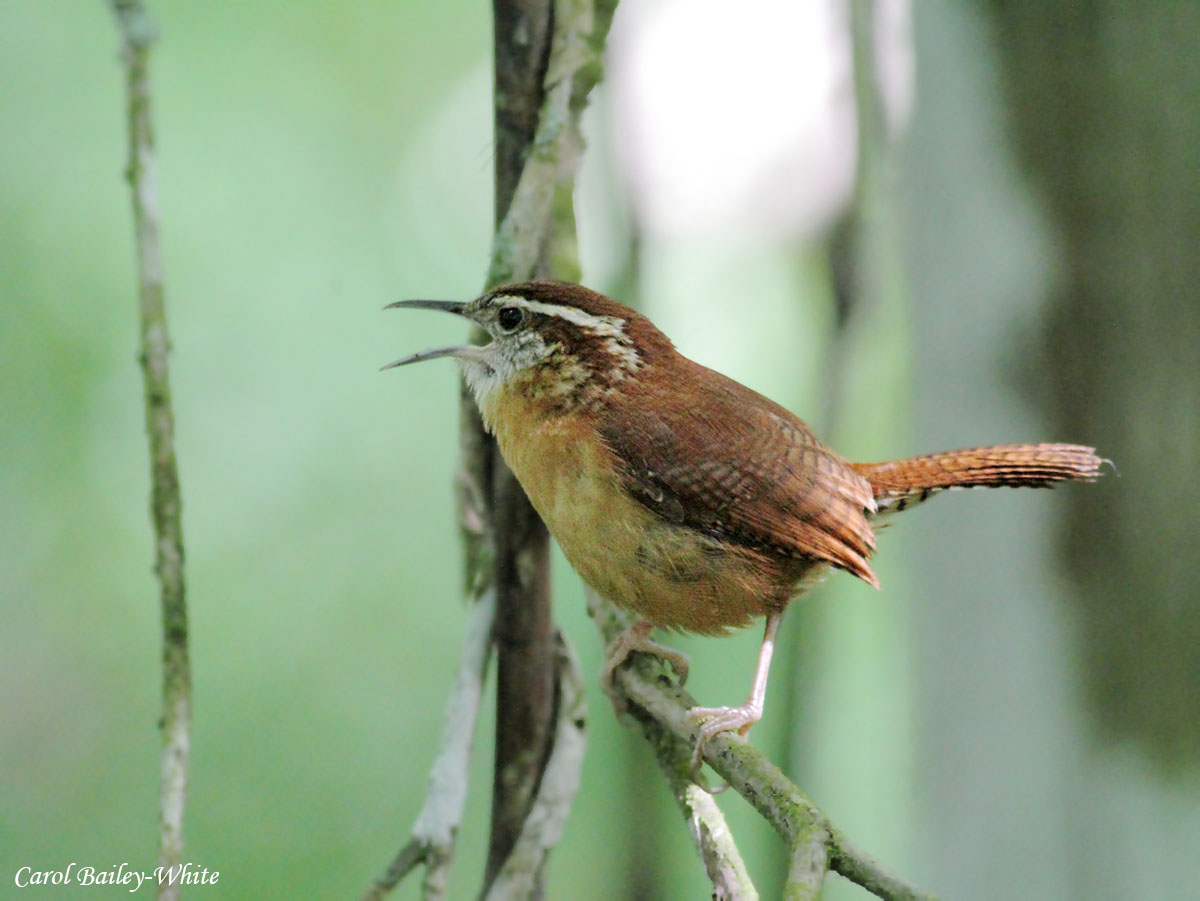 One of the greatest joys of birdwatching is listening to the sounds they make. There’s nothing like the songs and calls of birds as they go about their day proclaiming territories, communicating with family members, warning of predators, and singing to attract a mate. According to recent studies, listening to birdsong can reduce feelings of anxiety and depression and significantly improve your mood, so it’s good to spend some time just taking in the beautiful symphony that birds provide for us every single day. One of the greatest joys of birdwatching is listening to the sounds they make. There’s nothing like the songs and calls of birds as they go about their day proclaiming territories, communicating with family members, warning of predators, and singing to attract a mate. According to recent studies, listening to birdsong can reduce feelings of anxiety and depression and significantly improve your mood, so it’s good to spend some time just taking in the beautiful symphony that birds provide for us every single day.
You can amplify your enjoyment by learning to recognize which species is calling or singing. Birding by ear can be intimidating at first, but it’s just another way for bird lovers to experience the diversity of bird species in a particular area at a particular time. Adding birding by ear to your bird identification toolbox, along with learning size and shape, field marks, behavior, range, and habitat, can significantly improve your appreciation of the birds that are all around us.
Here are some simple tips to help you get started:
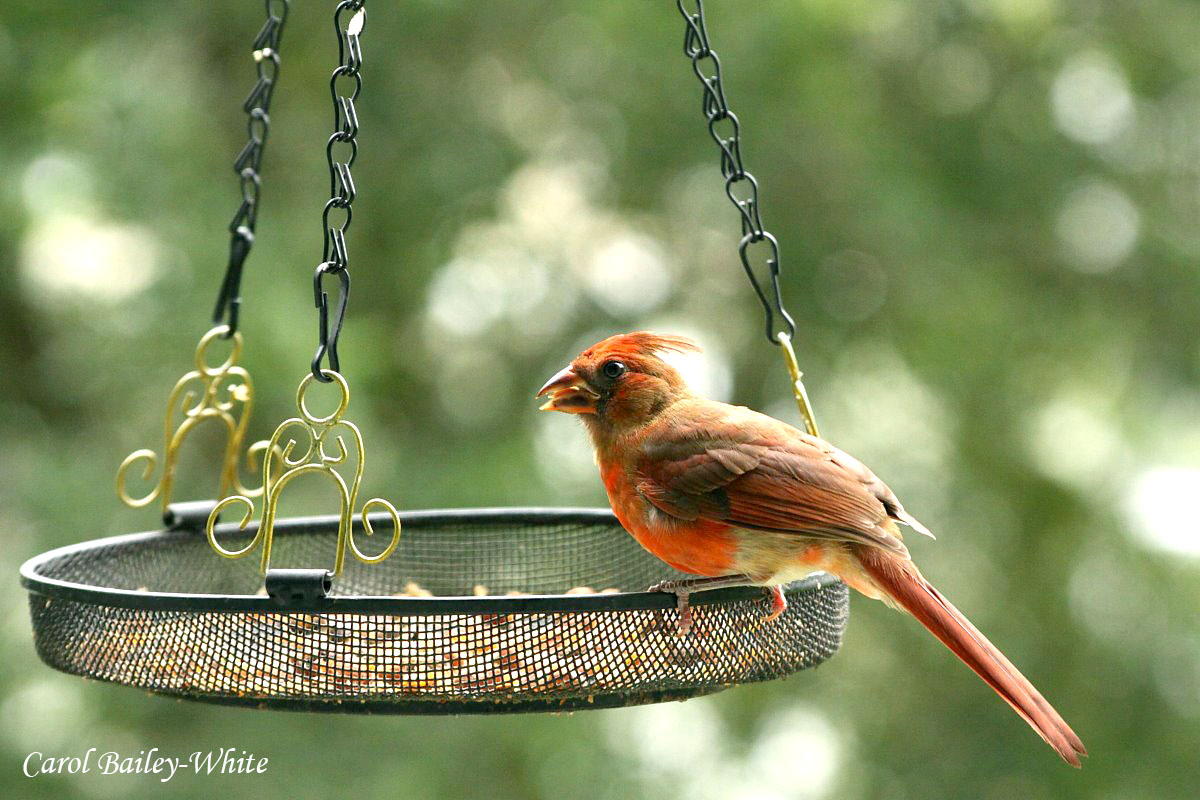 Start small. Concentrate on learning the sounds of a species you're already familiar with. Northern Cardinals are a good example – they’re bright and easy to see, and readily come to feeders. Take some time to watch them in your yard or favorite birding spot so you can actually SEE them making their various calls and songs. That will make it much easier to remember the next time you hear those sounds. Start small. Concentrate on learning the sounds of a species you're already familiar with. Northern Cardinals are a good example – they’re bright and easy to see, and readily come to feeders. Take some time to watch them in your yard or favorite birding spot so you can actually SEE them making their various calls and songs. That will make it much easier to remember the next time you hear those sounds.- Get the easy ones first. Birds that say their own name when they call make it much easier to identify them by sound. Some great examples of this include the Carolina Chickadee (“CHICK-a-dee-dee-dee”), the Eastern Phoebe (“FEE-bee, FEE-bee”), Eastern Wood Peewee (“pee-a-WEE”), and the Northern Bobwhite (“bob-WHITE”).
- Recognize that a bird can make many different sounds. Going back to our Northern Cardinal example, parts of their bubbly song can sound like someone shooting a laser gun, or “cheer, cheer, cheer,” or “purty, purty, purty,” or many other variations. They also frequently make high-pitched metallic “chip” notes as they forage, so learning to recognize the “voice” of a particular species can be helpful. Listening carefully is the way to achieve this but realize that it takes time – be patient with yourself.
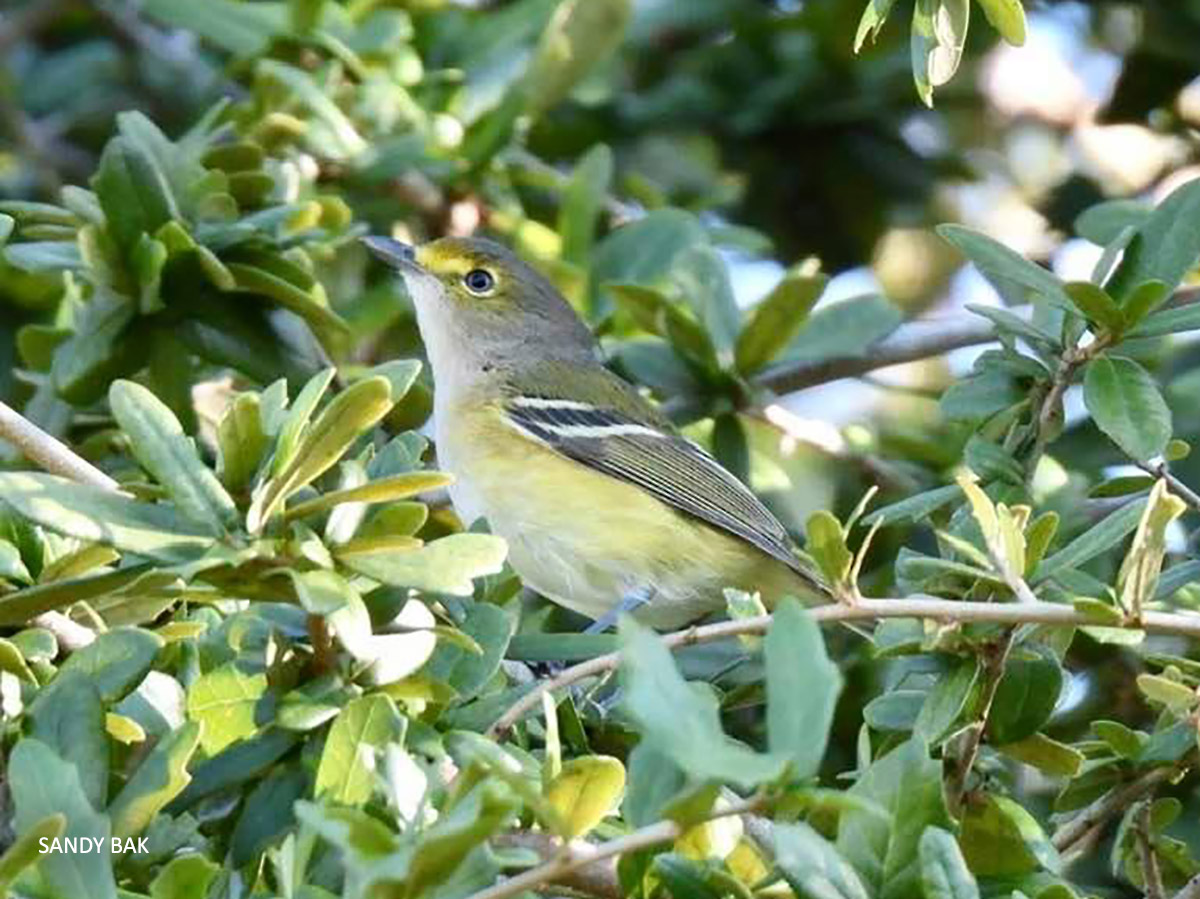 See if mnemonics (nee-MON-ix) can help. Mnemonics are words or phrases that help string together the syllables and notes of a bird’s song so that you can remember its rhythm, pitch, and tempo. For example, some liken the song of the White-eyed Vireo to the phrase, “Quick! Get me a Beer, CHEK!” And everyone knows about the Barred Owl’s “Who Cooks for You, Who Cooks for You-all” call. There are lots of different ones for many different species, and you can even come up with your own if it helps you remember what bird is singing or calling. See if mnemonics (nee-MON-ix) can help. Mnemonics are words or phrases that help string together the syllables and notes of a bird’s song so that you can remember its rhythm, pitch, and tempo. For example, some liken the song of the White-eyed Vireo to the phrase, “Quick! Get me a Beer, CHEK!” And everyone knows about the Barred Owl’s “Who Cooks for You, Who Cooks for You-all” call. There are lots of different ones for many different species, and you can even come up with your own if it helps you remember what bird is singing or calling.- Apps like Merlin Bird ID can really help. Merlin has a “Sound ID” feature that uses your phone’s microphone to record bird sounds and tell you what bird is making that sound. Use caution, though: Merlin Bird ID is not infallible! Confirm by trying to see the bird that’s making the sound before reporting it on your eBird list. You can also listen to bird sounds on the Merlin app.
- Go online to listen to bird songs and calls on sites like AllAboutBirds.org, xeno-canto.org, and others, and search for birding by ear videos on YouTube and other sites.
- Last but definitely not least, go birding with experienced birders (like those who lead our bird walks!) who know what they're hearing and can call it to your attention. Repetition is key, so take advantage of any opportunity to remind yourself of the sounds birds make.
There are lots of ways to enhance your birding experience by learning to bird by ear, and these are just a few tips to help you get started. Happy birding!
~ Carol Bailey-White
WILL YOUR VOICE BE HEARD?
 Duval Audubon Society is dedicated to the protection of birds and the habitat they need to survive. Are you a member? Duval Audubon Society is dedicated to the protection of birds and the habitat they need to survive. Are you a member?
Our local chapter works hard to protect important habitats in our area and the birds and other wildlife that rely on them. We are increasingly active in conservation work. The more members we have, the more effective our voices for birds and bird habitat will be. When leaders learn we have over 1,000 members in the area, they listen.
Help us increase our voices so that the birds we love will be protected. Join today.
Unsure of your membership status? Reach out to our membership director.
~ Christine Lucas
UPCOMING ACTIVITIES
Here's what's happening this month:
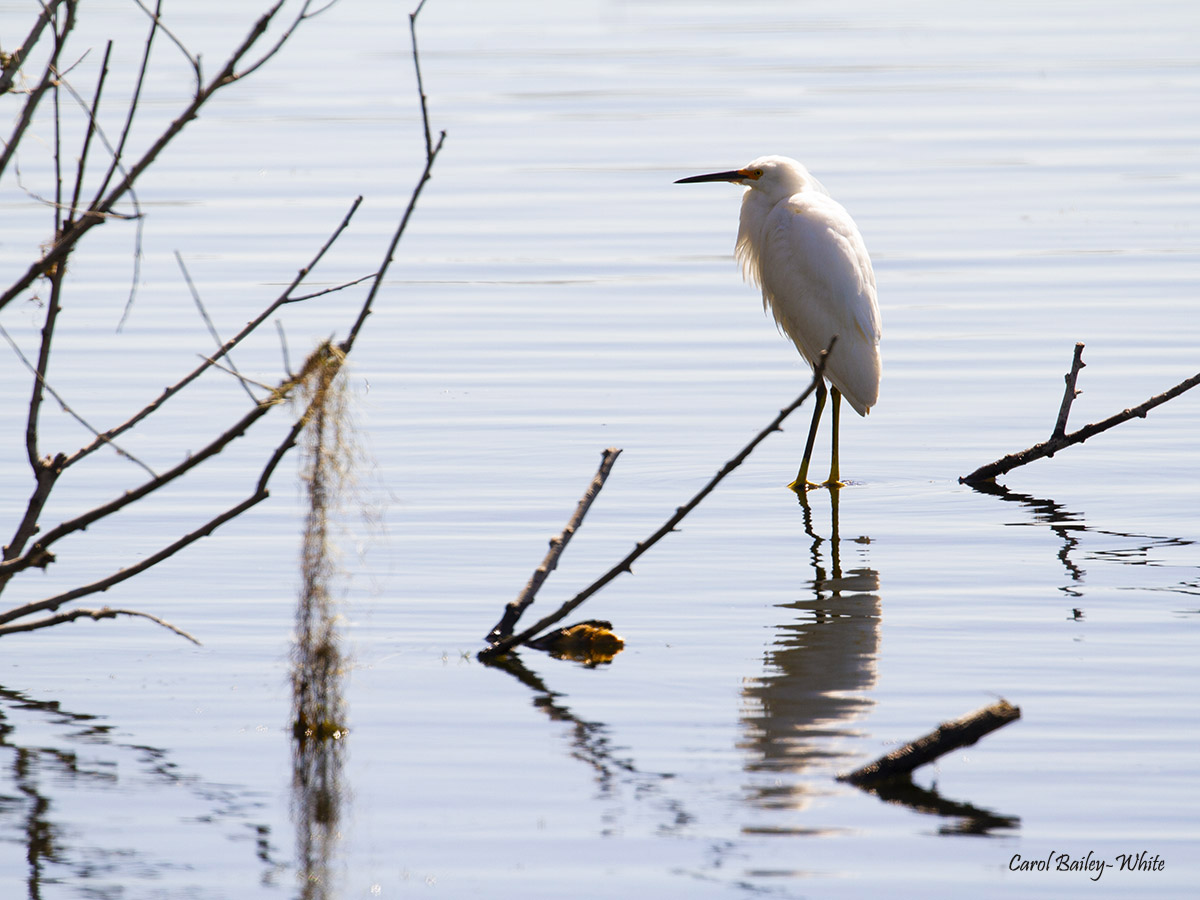 Field Trip @ Alligator Lake Park (Lake City): 8 - 11 am, Saturday, March 4, 2023 (register here) Field Trip @ Alligator Lake Park (Lake City): 8 - 11 am, Saturday, March 4, 2023 (register here)- Bird Walk for Beginners @ Fort Caroline National Memorial: 10 am - noon, Sunday, March 5, 2023 (register here)
- Nature Walk and Work Day @ Crosby Sanctuary: 8 am - 12 pm, Saturday, March 18, 2023 (register here)
- Monthly Program (in-person meeting): "Beach Birding Best Practices" @ Heckscher Drive Community Club, 9364 Heckscher Dr, Jacksonville, FL 32226: 6:30-8 pm, Monday, March 20, 2023 (PLEASE NOTE NEW LOCATION)
- Open House @ Crosby Sanctuary: 8 am - 12 pm, Saturday, March 25, 2023 (no registration needed)
We look forward to seeing you soon!
Duval Audubon Society, Inc.
P.O. Box 16304
Jacksonville, FL 32245
www.duvalaudubon.org
    
|
|
|
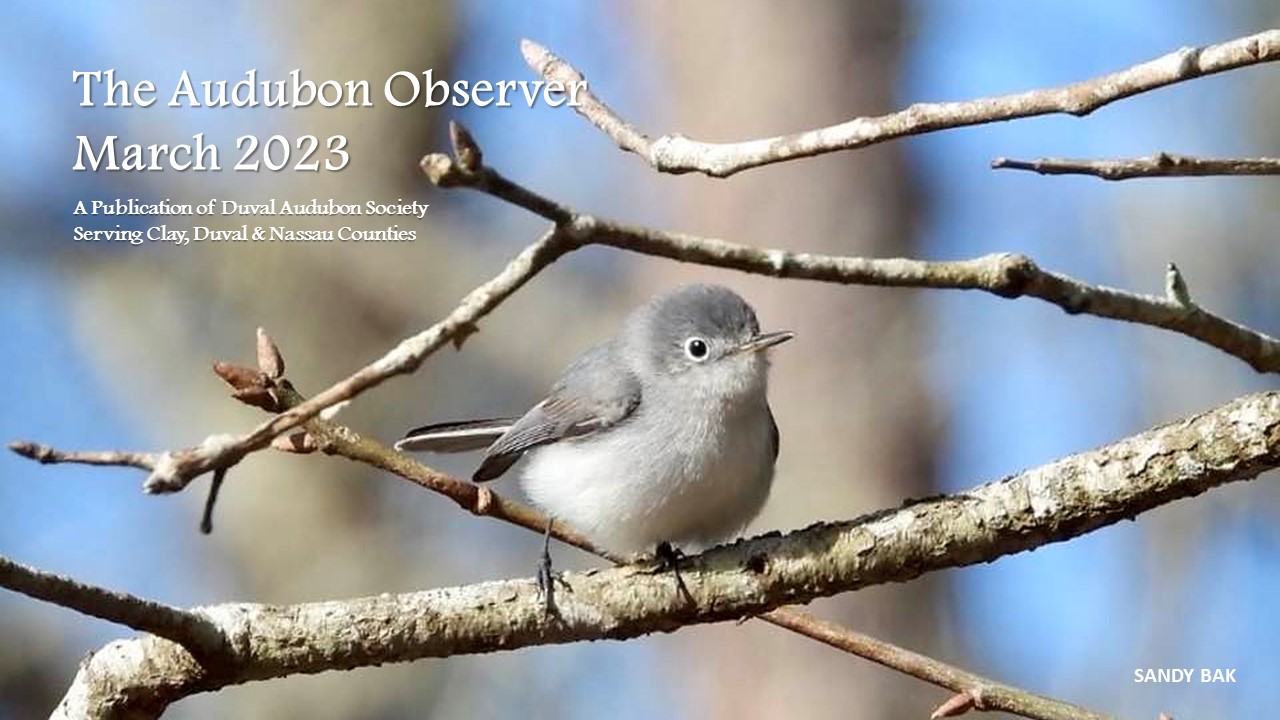

 Northeast Florida is a major pathway for migrating birds along the
Northeast Florida is a major pathway for migrating birds along the 
 One of the greatest joys of birdwatching is listening to the sounds they make. There’s nothing like the songs and calls of birds as they go about their day proclaiming territories, communicating with family members, warning of predators, and singing to attract a mate. According to
One of the greatest joys of birdwatching is listening to the sounds they make. There’s nothing like the songs and calls of birds as they go about their day proclaiming territories, communicating with family members, warning of predators, and singing to attract a mate. According to  Start small. Concentrate on learning the sounds of a species you're already familiar with. Northern Cardinals are a good example – they’re bright and easy to see, and readily come to feeders. Take some time to watch them in your yard or favorite birding spot so you can actually SEE them making their various calls and songs. That will make it much easier to remember the next time you hear those sounds.
Start small. Concentrate on learning the sounds of a species you're already familiar with. Northern Cardinals are a good example – they’re bright and easy to see, and readily come to feeders. Take some time to watch them in your yard or favorite birding spot so you can actually SEE them making their various calls and songs. That will make it much easier to remember the next time you hear those sounds. See if
See if  Duval Audubon Society is dedicated to the protection of birds and the habitat they need to survive. Are you a member?
Duval Audubon Society is dedicated to the protection of birds and the habitat they need to survive. Are you a member? Field Trip @ Alligator Lake Park (Lake City)
Field Trip @ Alligator Lake Park (Lake City)